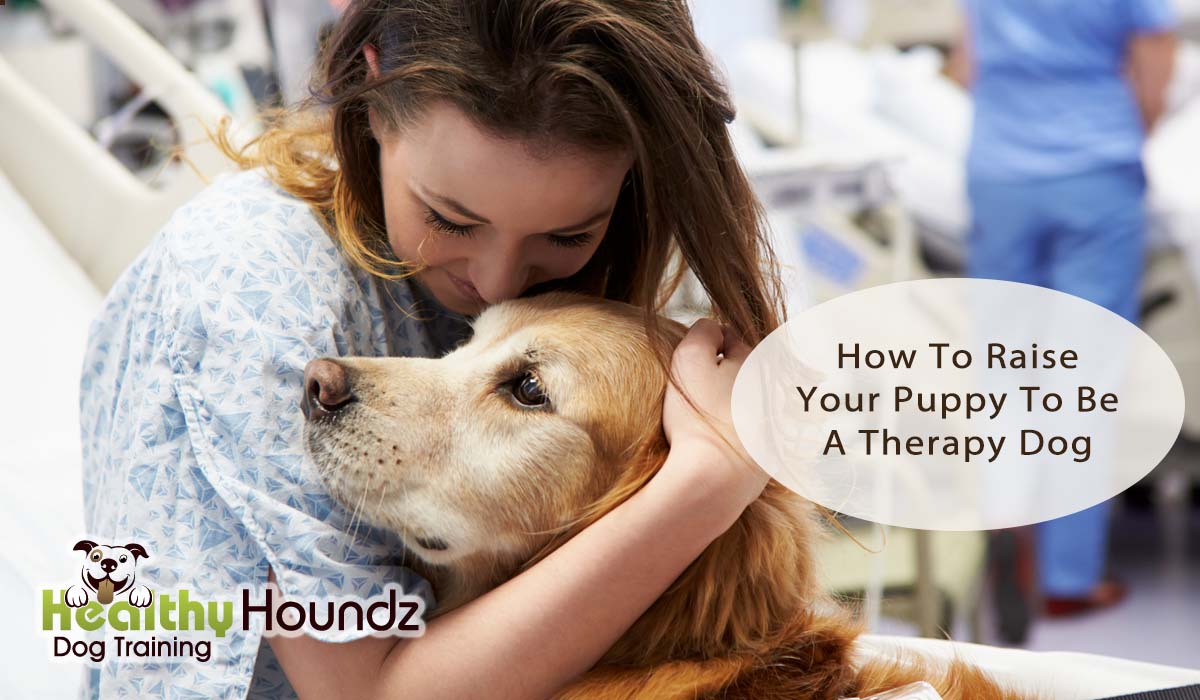Looking for a volunteer opportunity that’s fun, rewarding, and incorporates your love of dogs? Why not raise your puppy to be a therapy dog?
Therapy dogs bring that love and joy to people who do not have dogs but need them the most. As a therapy dog team, you might visit colleges during finals week, hospitals, nursing homes, rehab facilities, and schools.
Choosing The Right Puppy For Therapy Dog Work
A therapy dog can be big or small, mixed breed or purebred, and any age over 12 months.
It is not always possible to see if a puppy will grow up to be a good candidate for therapy dog work, but a pup that is friendly, outgoing, and not easily spooked might grow up to love meeting new people and may easily handle new, potentially stressful situations.
Foundational Skills For Therapy Dog Work
It’s never too soon to start training your puppy. Start practicing foundational skills like sit, stay, come, and leave it as soon as you can.
Once your puppy has mastered foundational cues, you can begin to proof them for distractions and strange environments. Practice those cues while your kids run around in the backyard, when you visit a new park, and when you visit a pet-friendly retail store. You’ll need high-value treats to compete with distractions, but when every learning experience is fun and rewarding, your puppy will learn that you’re always more exciting than their environment.
Raising A Bulletproof Puppy
When you’re doing therapy work, it’s important that you always watch your dog’s body language. Be prepared to speak up if your dog seems uncomfortable, especially if they are being hugged too hard, hovered over, or crowded by groups of students or patients.
Even so, your puppy should be conditioned to tolerate a certain amount of rough handling, loud noises, and strange situations. Prepare your dog to be hugged tightly, have their ears or tail pulled, and to be hovered over.
For example, you might prepare your dog for unexpected tail-pulling by gently holding their tail for just a second, then praising them and giving them a treat. There’s no need to cause your dog pain or aggravate them, and they just need to be able to tolerate accidental rough handling so their immediate reaction would be to anticipate a treat rather than bite.
Your puppy should also be comfortable around items you’d normally see in a school, hospital, or nursing home. They should be exposed to people walking around with crutches and people rolling by on wheelchairs. Your puppy should also know to greet people with their four paws on the ground, rather than jumping and possibly injuring a child or elderly person.
Finally, your puppy should be able to ignore other dogs when asked and politely greet other dogs when they’re in close proximity.
Check out Therapeutic Paws Of Canada for more information on how to get your dog certified for therapy work and find a local team to join.
Start Early With A Professional Trainer
During puppyhood, your dog goes through several “fear periods,” during which scary experiences are more likely to result in phobias and behavioural issues that can last the rest of their lives. In some cases, this can mean your dog is not suitable for therapy work.
Working with a professional trainer before your puppy develops fears, phobias, and bad habits will greatly increase their chances of becoming a therapy dog.
Train your dog with Healthy Houndz virtually over Zoom.


Recent Comments